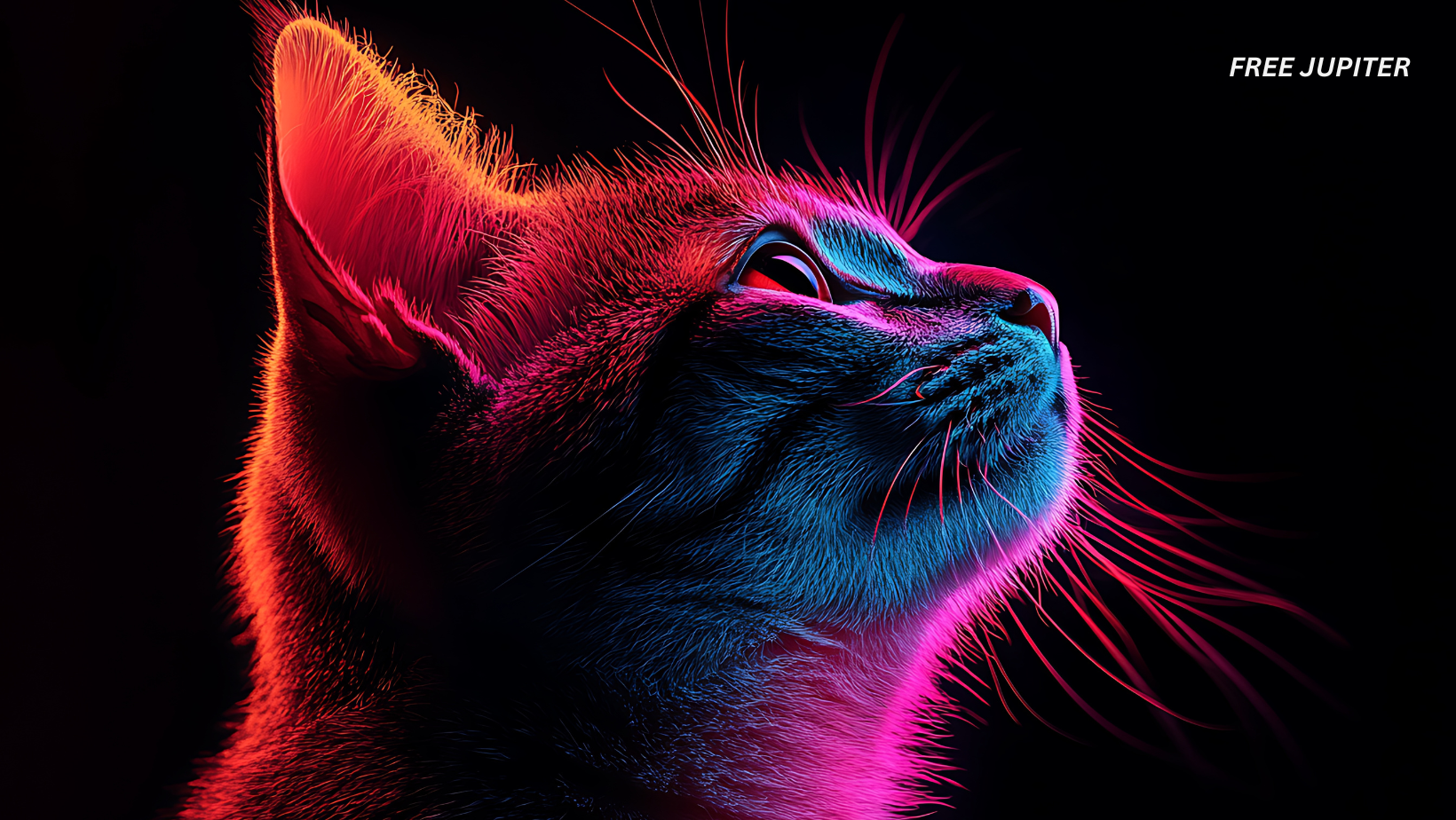Friendly Note: FreeJupiter.com shares general info for curious minds 🌟 Please fact-check all claims—and always check health matters with a professional 💙
We call a lot of things “perfect”—a cup of coffee, a good hair day, that one photo where your cat actually looked at the camera. But science rarely throws that word around. Nature is messy, after all. So when evolutionary biologists like Dr. Anjali Goswami suggest that cats are nearly perfect, it’s worth paying attention.
This isn’t about how adorable your tabby looks in a sweater. It’s about how cats, across time and species, seem to have hit an evolutionary sweet spot so precise that nature has more or less left them alone. From jungle prowlers like tigers to that loaf-shaped feline on your couch, cats have found one job—being predators—and stuck the landing.
Nature’s Favorite Minimalist
Cats aren’t just animals that happen to live with us. They’re walking, purring examples of evolutionary efficiency. Dr. Goswami, a researcher at London’s Natural History Museum, points out that most animals evolve over time—changing shape, habits, or diets to survive. But cats? Not so much. Across dozens of species and millions of years, they’ve kept the same general blueprint.
A tiger and a house cat may look different in size and attitude, but their skulls and overall body plans are strikingly similar. That sameness isn’t laziness on nature’s part—it’s a sign of just how well cats are built. Evolution didn’t need to reinvent the wheel. It already rolled just fine.
Built to Hunt, and Only That
Take a look inside a cat’s mouth (or better yet, let your vet do that). Their teeth tell a clear story. Unlike bears or foxes, who hang onto molars to help with chewing plants, cats have a super-streamlined jaw made for one thing: slicing meat. They don’t nibble. They cut.
This setup makes cats “obligate carnivores”—fancy talk for meat-only eaters. They’re not interested in a mixed diet. No berries, no insects, no scavenging on trash. Just prey. That laser focus is what’s allowed so many types of cats to thrive in the same ecosystem without stepping on each other’s paws. They’ve all picked the same lane—and dominate it.
In evolutionary terms, that’s bold. Most animals survive by being flexible. Cats survive by being specialists. They don’t adapt to the environment; they already are the environment’s top predator.
Read more: Scientists Say More Animals Are Conscious Than We Ever Imagined—Even Insects
When Change Isn’t Needed
Here’s where things get quirky. In biology, being able to change is usually considered a big plus. The more flexible an animal is, the better it can survive when things go sideways. But cats break this rule in the best way. They’ve barely changed, and they’re doing just fine.
Even for scientists, telling the difference between the skull of a lion, a panther, or an oversized house cat can be tricky. They’re that similar. Most of the difference lies in scale, not in structure. Evolution seems to have looked at cats and said, “Good enough,” then walked away.
Other animals have tried to copy the cat formula. Ancient marsupials, for example, developed similar predator features. But they didn’t stick around. Cats, on the other hand, thrived—not because they diversified, but because they didn’t have to.
Not a Jack-of-All-Trades—A Master of One
While other species tried everything—eating different foods, moving in packs, inventing new strategies—cats kept doing their one thing: hunting. And they’ve done it so well that their basic form hasn’t needed an upgrade.
This kind of specialization might sound risky. What happens if their food source disappears? But cats are weirdly good at making it work almost anywhere. You’ll find them in deserts, forests, mountains, even your backyard. Their design is so sleek and focused that it adapts to the environment without having to actually change.
Same Look, Different Places
It’s not just about looks—it’s about function. Whether you’re looking at a snow leopard in the Himalayas or a calico curled up in a laundry basket, the same physical design is doing the job: stealth, speed, and precision.
And behavior-wise, most cats act similarly too. They’re loners. They’re quiet. They’re very into their personal space. Lions are the big exception, living in social groups, but even they stick to the core cat behaviors. Interestingly, lions also evolve a bit faster than their solitary cousins—probably because social animals tend to evolve more quickly.
Still, whether fast or slow, all cats orbit the same idea: stick to what works. Evolution didn’t have to rush them along. They were already winning.
The Anti-Cats: Meet the Bears
To get a better sense of how unusual cats are, just look at bears. Bears are like nature’s improvisers. Some eat mostly plants (pandas), some are marine hunters (polar bears), and some snack on bugs (sloth bears). Each one has carved out a wildly different role.
Cats didn’t do that. They found one lane—carnivorous stealth predator—and perfected it. That’s why they’re so consistent across the board, from body shape to hunting style. They don’t need to be everything. They just need to be really good at one thing.
Read more: Scientists Discover Animals Have a Mysterious ‘Sixth Sense’, Changing Evolutionary Theories
Silent and Deadly, By Design
What’s especially cool about cats is how their design supports their job. They aren’t loud hunters. They don’t rely on brute strength or teamwork. They hunt alone. Quietly. With surgical precision.
Their bodies help with that. Retractable claws let them sneak around. Whiskers detect tiny air changes. Their night vision is superb. Even the way they walk—placing their back paws exactly where their front ones just stepped—makes them nearly silent. Every little detail is part of the hunting machine.
Even their ability to land on their feet isn’t just a party trick—it’s part of how they stay agile and safe, built right into their DNA. No training required.
Masters Without Flash
Unlike other animals that had to evolve flashy new tools or behaviors, cats mostly… didn’t. They didn’t need to. While others were adapting, cats were refining. And it worked.
Plenty of animals tried to fill the same ecological niche that cats dominate. Most didn’t last. Cats didn’t need to reinvent the wheel. They just sharpened it.
What’s impressive is that such narrow specialization usually comes with risks. But cats are flexible in their own way. They may be picky about food, but they’re remarkably good at living just about anywhere.
Cats and Us: A Curious Bond
Science can explain how cats got to be nearly perfect biologically, but it doesn’t fully explain why we’re so drawn to them. Maybe it’s because they reflect something we admire—grace, independence, calm.
Cats don’t do obedience. They don’t follow commands. And that’s kind of the point. When they choose to curl up next to you, it feels like a small miracle. You didn’t make them do it—they decided to.
That sense of autonomy resonates. We live in a world of constant pings and performance. Cats do none of that. They blink slowly in a sunbeam, breathe deeply, and remind us that being is enough.
Lessons from the Feline Way
In a culture addicted to busyness and reinvention, cats offer a refreshing lesson: you don’t have to do it all. You can pick one thing, do it well, and live it fully. You can be steady, focused, and grounded—and still be successful.
They also remind us that connection doesn’t have to be loud or constant. Sometimes the quietest presence is the most genuine. You don’t have to chase love or validation. You just have to show up, be real, and do what you’re built to do.
Cats don’t evolve dramatically. They just continue being cats. And somehow, that’s enough.
Read more: Science Confirms: Losing a Dog Hurts Just Like Losing a Human Loved One
Final Thought: Maybe Perfection Isn’t Loud
If cats are nature’s quiet nod to perfection, maybe we should pay attention. They don’t hustle. They don’t apologize. They don’t perform. They live as they are—and that, oddly enough, might be the most evolved thing of all.










